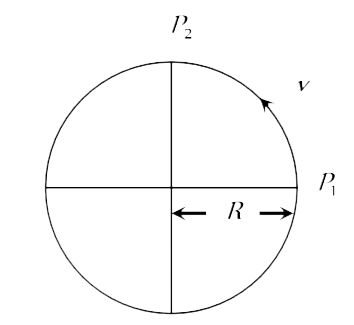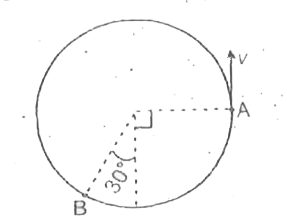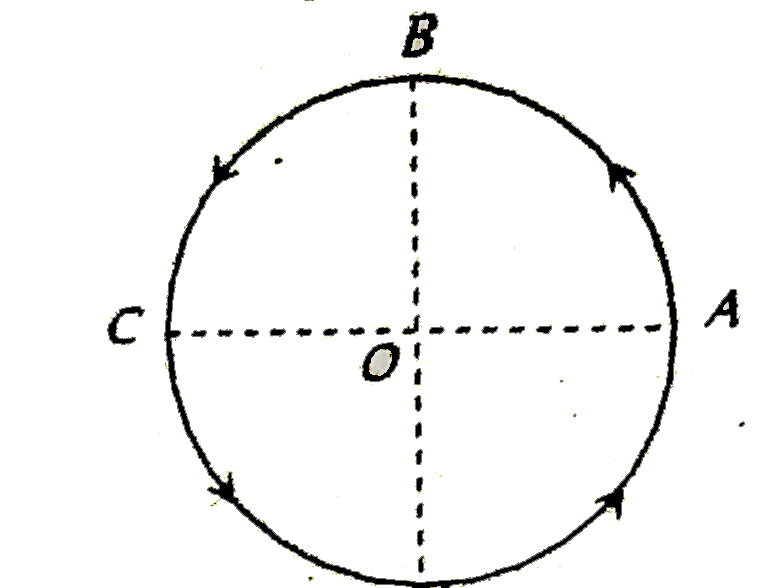Figure below shows a body of mass M moving with the uniform speed on a circular path of radius, R. What is the change in acceleration in going from P1 to P2

Zero
v2/2R
2v2/R
v2R×√2
The correct Answer is:A
Step by step video, text & image solution for Figure below shows a body of mass M moving with the uniform speed on a circular path of radius, R. What is the change in acceleration in going from P_(1) to P_(2) by Physics experts to help you in doubts & scoring excellent marks in Class 11 exams.
Topper's Solved these Questions
Similar Questions
A particle of mass m moves with constant speed v on a circular path of radius r as shown in figure. The average force on it during its motion from A to B is
 View Solution
View SolutionDefine centripetal acceleration. Derive anexpression for the centripetal acceleration of a particle moving with uniform speed v along a circular path of radius r. Discuss the direction of this acceleration
View Solution
Knowledge Check
- Question 1 - Select One
Figure shows a body of mass m moving with a uniform speed v along a circle of radius r . The change in velocity in going from A to B is
 Av√2Bv/√2CvDZero
Av√2Bv/√2CvDZero - Question 2 - Select One
A body of mass 1kg is moving with a uniform speed of 1m/s in a circular path of radius 1m. The external force acting on the body is
A1NB1 dyneC1JDzero - Question 3 - Select One
If a body is moving with a uniform speed v in a circle of radius 'r', then the angular acceleration of the body will be
Av/rBv2r along the radius and away from the centreCv2r along radius and toward centreDzero
A body of mass 5kg is moving along a circle of a radius 1m with a uniform speed of 5 ms.What is the acceleration of body?
View SolutionA particle of mass m moves with constant speed v on a circular path of radius r. Find magnitude of average force on it in half revolution.
View SolutionA Particle of mass 'M' moves in a uniform circular path of radius 'r' with a constant speed 'v' then its centripetal acceleration is .
View SolutionA particle of mass M moves with constant speed along a circular path of radius r under the action of a force F. Its speed is
View SolutionIf a body moves along circular path of constant radius, then the magnitude of its acceleration will be
View Solution

